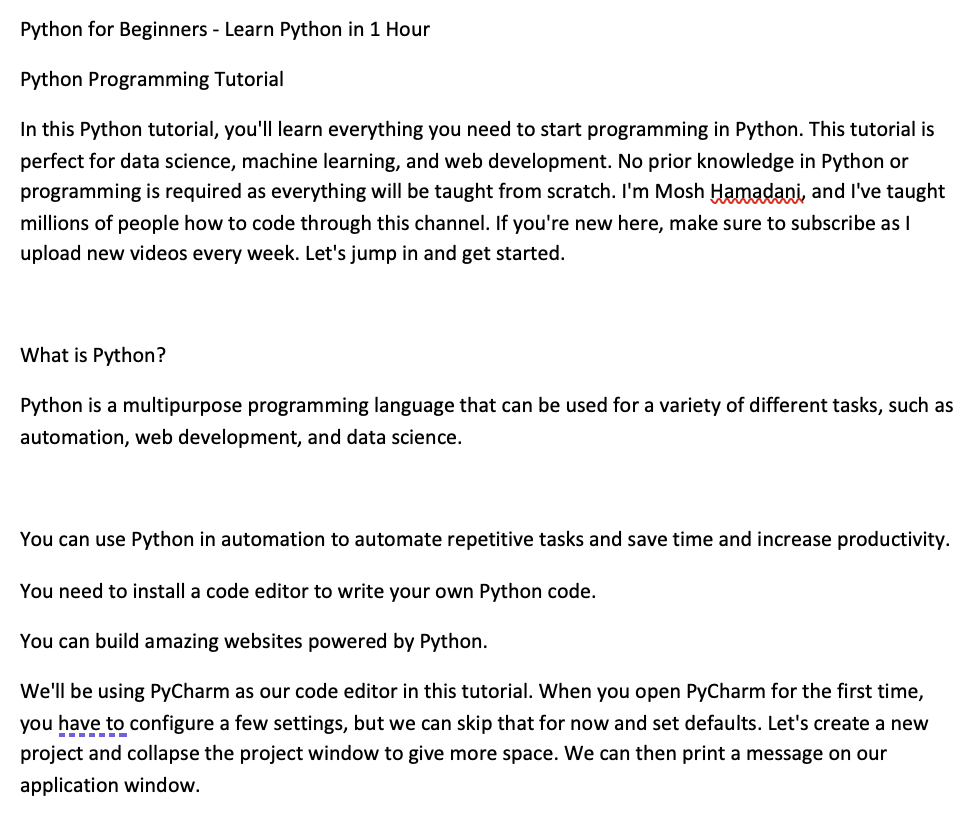Python Programming for Beginners (Grade A+)
Summary:
This text is a Python tutorial aimed at beginners. It introduces Python as a multipurpose programming language and discusses its applications in automation, web development, and data science. The tutorial uses PyCharm as the code editor and provides instructions on running Python code, declaring variables, and using Boolean values. It also covers receiving user input and explains Python’s three main data types: numbers, strings, and booleans. Furthermore, the tutorial includes examples of converting data types using int() and float() functions.
Excerpt:
Python Programming for Beginners
Python Programming Tutorial
In this Python tutorial, you’ll learn everything you need to start programming in Python. This tutorial is perfect for data science, machine learning, and web development. No prior knowledge of Python or programming is required as everything will be taught from scratch. I’m Mosh Hamadani, and I’ve taught millions of people how to code through this channel. If you’re new here, subscribe as I upload new videos weekly. Let’s jump in and get started.
What is Python?
Python is a multipurpose programming language for various tasks, such as automation, web development, and data science.
You can use Python in automation to automate repetitive tasks, save time, and increase productivity.
You need to install a code editor to write your own Python code.
You can build amazing websites powered by Python.
We’ll be using PyCharm as our code editor in this tutorial. When you open PyCharm for the first time, you have to configure a few settings, but we can skip that for now and set defaults. Let’s create a new project and collapse the project window to give more space. We can then print a message on our application window.
Running Python Code
To run Python code in PyCharm, we go to the run menu, select run, or use the shortcut (ctrl+shift+r on a Mac). Then select the app to run, and the output will appear in the terminal window. Python is case-sensitive, so use the correct case when coding. We can declare variables like age and price and assign them values. Python also has boolean values that can be true or false.


Reviews